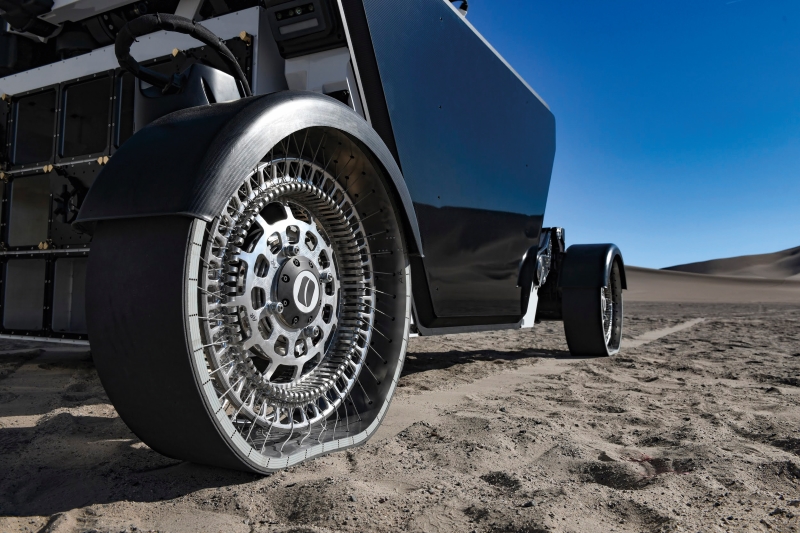Reinventing the wheel for lunar rover
A hyper-deformable wheel from Venturi Lab in Switzerland is set to go into service at the lunar South Pole in 2026, when SpaceX lands Venturi Astrolab’s FLEX rover on the Moon.

Designed to work at extreme temperatures of -90°C to -230°C, the four wheels supporting a 2t vehicle (including payload) will warp to absorb ground irregularities as the FLEX travels at speeds of up to 12.4mph. The wheels will need to endure travelling at least 1,000km and resist strong radiation from the lunar South Pole.
Engineers, chemists and physicists at Venturi Lab in Fribourg were tasked with studying, designing and manufacturing mobility solutions capable of handling the extreme environmental conditions found on the Moon and Mars.
The wheel has a diameter of 93cm, compared to 80cm for the Apollo wheel. It also encompasses a complex system of 192 cables that act as spokes, a tread made flexible by a newly invented material and an outer rim equipped with springs.
It reportedly has a maximum deflection of roughly 60mm and then the bump stop limits deformation, unlike previously rigid wheels used on many Apollo missions.
A contact path length of 350mm is said to give the wheel good traction on soft soil. Dr Antonio Delfino, Director & Co-founder of Venturi Lab, explains, 'Its very good contact path also enables it to climb slopes at up to a 30° angle.'
The compliant wheel can thus endure thousands of kilometres travelling on the Moon. 'This is a NASA requirement for the next lunar terrain vehicle for Moon exploration,' adds Delfino. 'The wheel has been designed to get past large rocks 35-40cm in height. It [also] complies with all types of impacts that a rover will encounter on the Moon.'
The firm is tight-lipped about the new material used for the tread. 'Many patents are pending and will be published in roughly 18 months. What we can say is that it is a combination of many innovative materials.
'Its biggest features are its ability to carry a high payload at high speed and to deform and work in a harmonious way. Additionally, the compliant wheel is very robust and attains levels of comfort and handling similar to what we have with terrestrial pneumatic tyres used to ensure vehicle safety. Unfortunately, terrestrial tyres cannot work on the Moon, mainly due to the rubber material, which becomes very brittle at low temperatures (i.e. below -50°C).'
Delfino continues, 'The temperature is not the only criterion – the wheel must also resist radiation and its components must work correctly in a vacuum…It has been designed…to survive the South Pole lunar night.'
In addition to the Moon, the wheel is also operable on Mars, suggests Venturi. The deformability will enable faster travel than the current rover speed of 0.6mph.
'This unique compliant wheel could become a reference for all types of heavy and rapid planetary rovers built in the future,' suggests Delfino. 'This is very important for humans and long-term presence on the Moon, Mars and other planets or satellites, for instance Enceladus (a moon of Saturn).'







